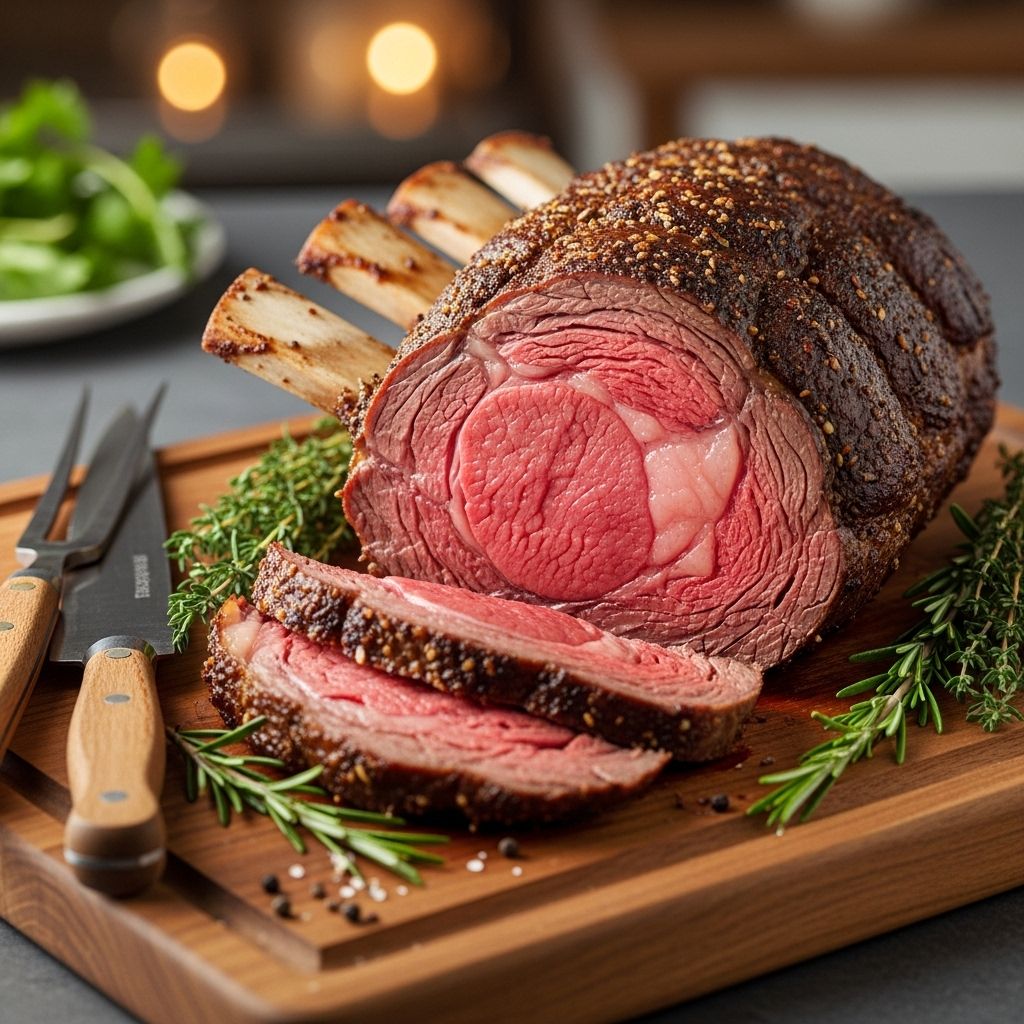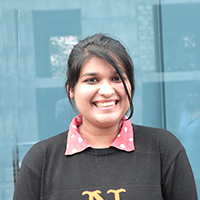Perfect Prime Rib: The Ultimate Reverse-Sear Technique
Unlock a simple roasting method for evenly cooked meat and a golden, crisp crust.

Perfect Prime Rib: The Science and Art of the Reverse-Sear
Nothing signals a celebration like a perfectly cooked prime rib. For beef lovers and holiday hosts, achieving that deep rose-pink interior and crisp, flavorful crust is the ultimate goal. This guide breaks down the best practices and science-backed secrets for preparing a showstopping prime rib using the reverse-sear method—a technique lauded by experts for delivering unbeatable results.
Why Prime Rib?
Prime rib—also known as standing rib roast—is one of the most luxurious cuts of beef. Tender, marbled, and rich in flavor, it’s perfect for special occasions. Its natural juiciness and impressive presentation have earned it a place at festive tables around the world. Whether you’re aiming for rare or well-done, the right technique makes all the difference.
The Challenge: Even Cooking and the Perfect Crust
Traditional roasting methods often result in a roast that’s well-done on the outer edges and only perfectly pink in a thin center band. While delicious, this method can waste some of the roast’s most tender meat. The reverse-sear method flips the usual process for more even results:
- Start with a slow, low-temperature roast to gently and evenly cook the meat.
- Rest the roast out of the oven to allow juices to redistribute and the temperature to even out.
- Finish by briefly roasting at high heat to create a crisp, browned crust just before serving.
What Makes the Reverse-Sear Method Special?
This technique offers several advantages:
- Edge-to-edge pinkness: Nearly the entire roast achieves your target doneness, not just the center.
- Crisp, flavorful crust: The high-heat finish delivers a crackling exterior.
- Flexible timing: The resting period lets you synchronize the finish with your meal schedule.
- Juicier meat: Resting before searing limits juice loss.
Choosing Your Prime Rib
Before you begin, it’s important to select the right piece of meat. Here’s what to look for:
- Grade: True prime grade beef has superior marbling and tenderness, but choice-grade beef also yields great results with this technique.
- Size: The method works for roasts as small as 3 pounds and as large as 12 pounds. Adjust roasting time accordingly.
- Bone-In vs. Boneless: Bone-in roasts cook more evenly and present beautifully at the table. However, a boneless roast is slightly easier to carve and can be used with no change to the method.
| Feature | Bone-In Prime Rib | Boneless Prime Rib |
|---|---|---|
| Cooking Evenness | Excellent | Very Good |
| Presentation | Impressive | Sleek |
| Ease of Carving | Moderate | Easy |
Essential Ingredients
- 1 standing rib roast (3 to 12 pounds)
- Kosher salt
- Freshly ground black pepper
Optional flavor additions include fresh herbs (such as rosemary and thyme), crushed garlic, and a touch of olive oil to help seasonings adhere—but simple seasoning lets the beef shine.
Equipment Needed
- V-rack and large roasting pan
- Instant-read thermometer (critical for accuracy)
- Aluminum foil (for resting)
- Breadknife or carving knife for slicing
Step-by-Step Guide to Perfect Prime Rib
1. Salt and Season in Advance
Generously coat the roast with kosher salt at least 2 hours before roasting (or up to overnight, uncovered in the refrigerator for best flavor and a drier surface for browning). Add freshly ground black pepper and any desired aromatics.
2. Preheat for Low-and-Slow Roasting
Set your oven to its lowest possible temperature, ideally between 150°F (66°C) and 250°F (121°C). Lower oven temperatures produce superior edge-to-edge pinkness, but adjust based on your oven’s capabilities.
3. Roast Gently Until Target Internal Temperature
- Place roast fat-side up on a V-rack in a roasting pan.
- Insert an instant-read thermometer into the center.
- Roast until the thermometer reaches 120-125°F (49-52°C) for rare, 130°F (54°C) for medium-rare, or 135°F (57°C) for medium.
- Cooking time varies:
— At 150°F: 5.5 to 6.5 hours
— At 250°F: 3.5 to 4 hours
4. Rest Before Searing
Remove the roast from the oven and tent it loosely with foil. Let it rest in a warm spot for at least 30 minutes, or up to 1.5 hours. This period equalizes the internal temperature, redistributes juices, and gives flexibility for timing your meal.
5. Sear at High Heat Just Before Serving
- Turn the oven up to its highest possible setting (500-550°F / 260-288°C).
- Remove any foil and return the rested roast to the oven for 6-10 minutes, watching carefully to achieve a dark, crisp crust without burning.
- Carve and serve immediately after searing.
Chef’s Tips and Troubleshooting
- Don’t skip the thermometer: Oven temps and roast sizes vary—thermometer accuracy is crucial for perfectly cooked meat.
- Advance dry-brining: Salting overnight seasons the beef deeply and promotes crust formation.
- Let the roast come to room temperature before cooking for most even results (about 1 hour out of the fridge).
- Fat cap up: Roasting with the fat side up helps baste the meat as it cooks.
Prime Rib Doneness Temperatures
| Doneness | Pull Temperature | Final Temperature After Searing |
|---|---|---|
| Rare | 120-125°F (49-52°C) | 125-130°F (52-54°C) |
| Medium-Rare | 130°F (54°C) | 135°F (57°C) |
| Medium | 135°F (57°C) | 140°F (60°C) |
| Medium-Well | 140°F (60°C) | 145°F (63°C) |
Remember, prime rib is best enjoyed rare to medium-rare to showcase its tenderness and flavor.
Serving Suggestions and Accompaniments
- Horseradish Cream: Prepare by folding together fresh (or jarred) horseradish, chopped chives, crème fraîche or sour cream, and cracked black pepper. This cooling, spicy sauce cuts through the richness of the beef.
- Au Jus: Pour off the roasting pan juices, skimming most fat, and serve as a light, beefy sauce.
- Pair with classic sides such as Yorkshire pudding, mashed potatoes, or roasted winter vegetables for a complete meal.
Timing and Advance Preparation: Hosting Made Easy
The reverse-sear method’s genius is in its timing flexibility:
- Because the roast can rest for up to 1.5 hours, you can finish other meal preparations without last-minute stress.
- Just sear and carve when ready to serve.
- Oven space is freed for side dishes during the resting period.
Frequently Asked Questions (FAQs)
What is the best oven temperature for roasting prime rib?
Lower oven temperatures (150°F–250°F) produce the most evenly cooked prime rib edge-to-edge. If your oven can’t go below 250°F, simply adjust roasting time.
Can I use this method for smaller or larger roasts?
Yes. The same method works for anything from 3 to 12 pounds. Smaller roasts cook more quickly, but the edge-to-edge effect remains highly effective.
Should I dry-age my prime rib?
While dry-aging can increase flavor intensity and tenderness, it is not necessary for fantastic results. Focus on quality beef and seasoning for reliability.
How long does prime rib need to rest?
Let the roast rest 30–90 minutes after the low-and-slow phase, tented loosely with foil. This gives time for the juices to redistribute and allows flexibility for the meal’s serving time.
Why not sear first and then roast?
Searing first can create an insulating crust that slows heat penetration and may lead to a less even finish. Reverse-searing maximizes both evenness and crust quality.
Expert Tips for Next-Level Prime Rib
- Slice against the grain for tender servings.
- Save the bones and scraps for rich beef stock or next-day sandwiches.
- Use a sharp carving knife for impressive, even slices.
- Let leftovers come to room temperature for best flavor (reheating can overcook beautiful rare beef).
Conclusion: Why the Reverse-Sear Is the Gold Standard
The reverse-sear method takes the guesswork out of prime rib. By roasting gently, resting, and searing at the finish, you ensure a beautifully even, juicy interior and a restaurant-quality crust every time. With a little planning and a reliable thermometer, any cook can master perfect prime rib—turning family dinners and holiday feasts into memorable events.
Further Reading and Resources
- Explore prime rib carving techniques for gorgeous presentation.
- Try different finishing salts or flavored butters to add a signature touch.
- Experiment with leftover beef in creative dishes—from hash to French dip sandwiches.
References
- https://www.youtube.com/watch?v=KCHpiHmOXyU
- https://www.youtube.com/watch?v=QUceCdIoqoI
- https://www.tiktok.com/discover/serious-eats-recipe-prime-rib
- https://pitmaster.amazingribs.com/forum/the-pit-mastery-program/beef-steak-brisket-roasts-prime-rib-etc/778348-ever-try-serious-eats-perfect-prime-rib-recipe
Read full bio of Anjali Sayee












